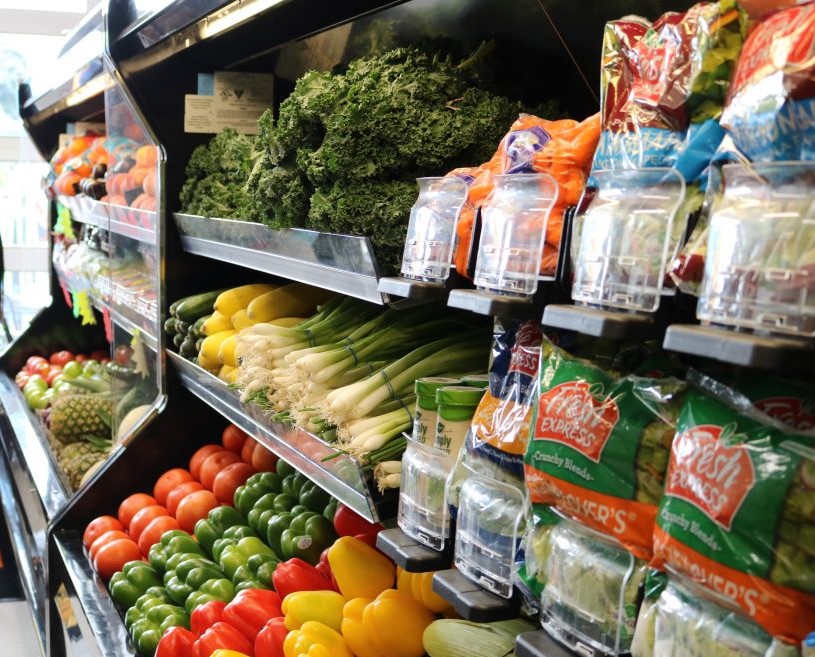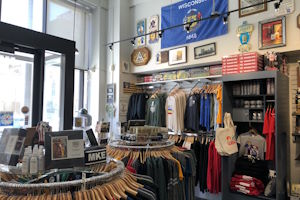How High Are Prices? Polls Show That’s a Partisan Question
Amid ongoing inflation, Marquette poll shows Republicans and Democrats view issue differently depending on who is in the White House.

Grocery store shelves. Photo by Sophie Bolich.
A new survey of Wisconsin residents shows even basic questions about things like the cost of food have become heavily influenced by political partisanship.
Longtime polling expert Charles Franklin says it’s an example of how much partisanship has filtered people’s perceptions about the real world.
Last month, the U.S. Department of Agriculture announced supermarket food prices in August were 2.7 percent higher than they were in August of 2024. But when the Marquette University Law School asked 846 registered Wisconsin voters this month whether they’ve seen grocery prices change, their answers ran the gamut.
Among those identifying as Democrats, 97 percent said prices had gone up by a little or a lot, and 87 percent of Independents said the same. Republicans, however, were much more on the fence. While 55 percent said grocery prices had gone up by a little or a lot, another 46 percent said prices had either gone down or stayed the same.
During a Wednesday presentation of the Marquette Law School results, Franklin asked the audience, “Why is that?”
“Maybe we all need to know where they’re shopping, because that would be a good fight against inflation,” said Franklin. “But look, let’s be straight about this, partisanship plays such a big role in answering these questions, it’s hardly surprising that Democrats think the worst of just about everything that can be associated with Donald Trump, and Republicans want to think good things about the economy and the president and inflation.”
In July, results from a nationwide poll by the Pew Research Center showed around 80 percent Americans said Republican and Democratic voters not only disagree on political policy, they also can’t agree on basic facts. A full 67 percent of respondents said partisan voters interpret the same information differently and 53 percent said that’s because Democrats and Republicans are getting different information to begin with.
In an interview with WPR, Franklin said the same perceptions built into Republican and Democratic voters’ answers about grocery prices this month, calling it evidence of a shift in how they’ve embraced partisanship over the last 15 years or more.
“In the past, we would see Republicans and Democrats moving up in parallel as the economy improved, regardless of who the president was,” Franklin said. “So, if it was your party’s president, you saw it as better than if it was the other party’s president, but when economic conditions moved up, you moved up together.”
Franklin said that’s changed since around 2010. Now, he said, members of whatever party is not in the White House rarely give any credit to the president when the economy is doing well. Likewise, those members of the party controlling the presidency are more willing to overlook bad economic news.
In the past, Franklin said, public polling on the economy used to reflect “real economic reality.”
“But over this last 15 years or so,” he said, “those measurements have become so tied up with partisanship that economists have found it harder to use those public opinion measures by themselves as something to forecast the future of the economy over the next 12 months, because there’s such a partisan bias built into it.”
Also, Franklin said polling has regularly showed rapid shifts in Republican and Democratic voters’ perceptions of the economy whenever a new president takes office.
Marquette polling data from January 2024, when Democratic President Joe Biden was in office, showed 84 percent of Republicans said the economy was either not good or poor. At the same time, 62 percent of Democrats said the economy was either good or excellent.
In February 2025, with Trump in office, 32 percent of Republicans said the economy was in good or excellent shape, while 76 percent of Democrats said it was in bad shape.
Franklin attributes the change to two factors. He said around the 1990’s, polling started to show that Republicans and Democrats were more likely to see members of their respective parties positively no matter what. At the same time, Franklin said people began seeing members of their opposing party negatively regardless of economic circumstances.
The other cause, he said, was the proliferation of partisan news sources. Franklin said 50 years ago, Americans had three choices for TV news with anchors like Walter Cronkite, David Brinkley and Chet Huntley. Now, he said, people can find media that cater to their politics.“Citizens have a much better chance of picking the news source that tells them what they want to hear now and emphasizes what they want to hear about, sometimes downplaying or even skipping what’s a pretty major news story if it’s not compatible with their ideological tilt,” said Franklin.
A research project at the University of Wisconsin-Madison’s School of Journalism and Mass Communication published this year suggested that consuming news from partisan media sources might undermine a person’s willingness to support politicians seeking compromise with the opposing party. That aversion to compromise, according to the study, was grounded in a tendency to see political issues less as policy based and more as a matter of right or wrong.
As for the Marquette poll’s findings on perceptions of grocery prices, Franklin said there was another interesting twist. He said women, regardless of their political stripes, were more likely than men to say food costs have risen.
“Within party, 32 percent of Republican women and 17 percent of Republican men say grocery prices have gone up a lot,” Franklin said. “Among independents, 80 percent of women and 49 percent of men say prices are up a lot, and among Democrats, 61 percent of women and 55 percemt of men see substantially higher prices.”
High prices? Polling shows it’s in the eye of the partisan beholder. was originally published by Wisconsin Public Radio.
If you think stories like this are important, become a member of Urban Milwaukee and help support real, independent journalism. Plus you get some cool added benefits.





















